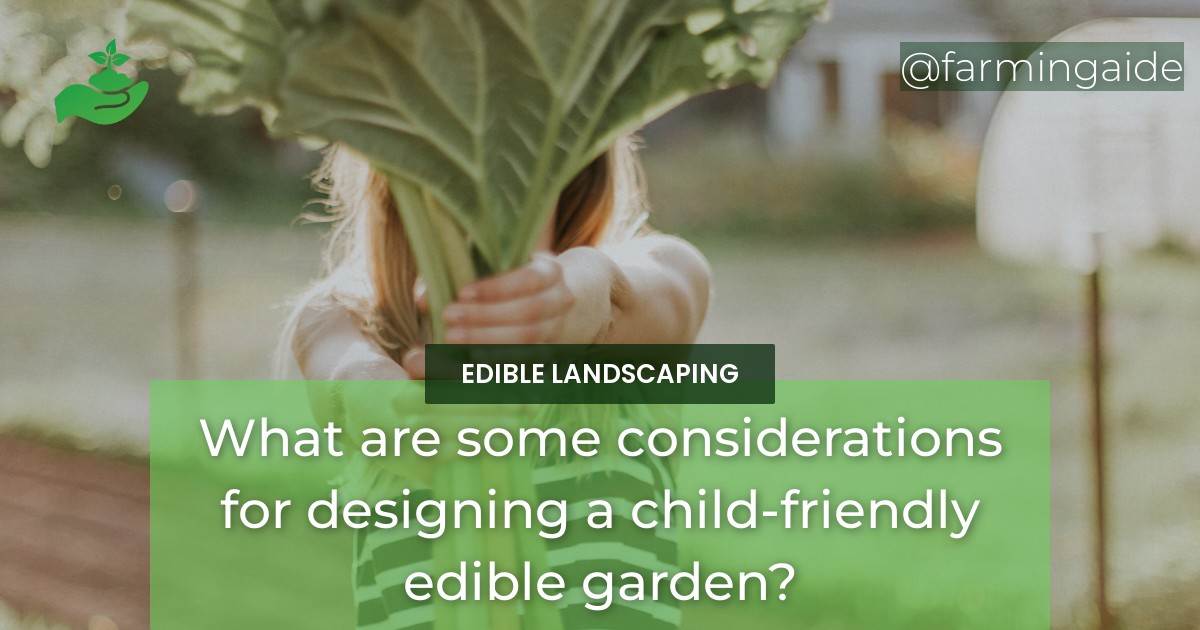Designing a child-friendly edible garden requires consideration of several factors to ensure that it is both engaging and safe for children to explore and grow their own food. Gardening with kids can be a fun-filled way to teach them about nature, biology, nutrition, and responsibility. Here are some things to keep in mind when designing a child-friendly edible garden:
Easy-to-Reach Plantings
Children should be able to reach the plants easily to water them, harvest them, and tend to them. Here are some easy-to-reach planting options:
Raised Garden Beds
Raised garden beds are an excellent way to make planting accessible to kids. You can adjust the height to their level, preventing the need to bend down to the ground, which can be hard on their backs.
Vertical Gardening
Vertical gardening involves planting in containers and organizing them vertically, such as on a trellis or wall. It is perfect for small spaces and can be used to grow vine crops like tomatoes and cucumbers.
Container Gardening
Container gardening gives you the flexibility to grow plants anywhere, even in limited spaces. This method is particularly useful for growing herbs and flowers, giving children an opportunity to learn about different aromas and colors.
Sensory Plants
Sensory plants offer children an opportunity to explore different textures and smells. Here are some sensory plants suitable for children:
Fragrant Herbs
Herbs like mint, basil, and rosemary have a distinct aroma, and children enjoy crushing their leaves to release the scent.
Soft and Fuzzy Leaves
Plants with soft and fuzzy leaves like lamb’s ear and sage are great to touch and feel. Children like stroking their leaves and feeling their velvety texture.
Textured Bark
Plants like the River Birch have textured bark that children can explore with their fingers, providing a sensory experience different from touching leaves or flowers.
ALSO READ
Edible Flowers
Edible flowers are a great way to add color and flavor to a child-friendly edible garden. Here are some edible flowers that children enjoy:
Nasturtiums
Nasturtiums are brightly colored flowers with a slightly sweet and spicy flavor. Their petals and leaves are edible and make a beautiful garnish for salads.
Calendula
Calendula is a beautiful golden-yellow flower with a slightly tangy flavor. Children like using them to decorate cupcakes and desserts.
Pansies
Pansies come in different colors and have a mild, sweet flavor. They are great for decorating cakes and making ice cubes for summer drinks.
Kid-Sized Garden Tools
Having the proper gardening equipment can make gardening easier and more fun for children. Here are some kid-sized garden tools to consider:
Trowels and Hand Forks
Trowels and hand forks are essential gardening tools that children can use to plant seeds, remove weeds, and loosen soil.
Watering Cans
Watering cans are lightweight and easy for children to carry. They can help children learn how to water plants properly.
Garden Gloves
Gloves protect children’s hands from thorns, sharp branches, and dirt. They also help keep their hands clean and dry while digging in the dirt.
ALSO READ
Safety Considerations
Safety is a crucial consideration when designing a child-friendly edible garden. Here are some safety precautions to take:
Avoiding Toxic Plants
Avoid planting toxic plants that could harm children if ingested. Some common toxic plants include foxglove, daffodils, and lily of the valley.
Avoiding Pesticides and Herbicides
Avoid using pesticides and herbicides that could be harmful to children. Consider using natural pest control methods like companion planting or beneficial insects instead.
Providing Shade and Sun Protection
Ensure that the garden has both shaded areas and sun protection to protect children from heat exhaustion and sunburn.
Involving Children in the Design Process
Involving children in the design process can foster their interest in gardening and encourage them to take ownership of the garden. Here are ways to involve them:
Choosing Plants Together
Allow children to choose plants they would like to grow in the garden, and then plant them together.
Creating Garden Art and Decorations
Encourage children to create garden art and decorations using materials like colored stones, painted rocks, and shells.
Providing Opportunities for Independent Exploration
Allow children to explore the garden independently and discover new things on their own.
Teaching Opportunities in the Garden
The garden is an excellent place to teach children about science, math, and nutrition. Here are some teaching opportunities in the garden:
Science Lessons
Children can learn about plant biology, photosynthesis, and the water cycle by observing and studying plants in the garden.
Math Lessons
Children can learn about measurement, fractions, and geometry by measuring the height and width of plants, counting the number of leaves, and drawing garden plans.
Nutrition Lessons
Children can learn about healthy eating habits and balanced nutrition by growing and harvesting their own fruits and vegetables.
How Can I Ensure My Child-Friendly Edible Garden Thrives in a Shaded Area?
When designing an edible garden in a shaded area, consider planting shade-tolerant herbs like mint, chives, and parsley. Grow leafy greens such as spinach and lettuce, and root vegetables like carrots and radishes. Choose compact fruiting plants like strawberries and blueberries. These edible garden design tips will help your garden thrive.
Conclusion
A child-friendly edible garden provides an opportunity for children to learn about nature, nutrition, and responsibility while having fun. It encourages them to eat healthy and fosters a love of gardening. By considering easy-to-reach plantings, sensory plants, edible flowers, kid-sized garden tools, safety considerations, involving children in the design process, and teaching opportunities, you can create a child-friendly edible garden that your kids will love.
RELATED ARTICLES:


